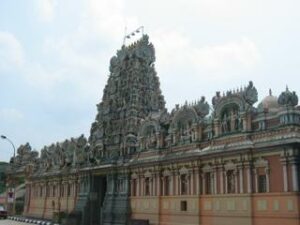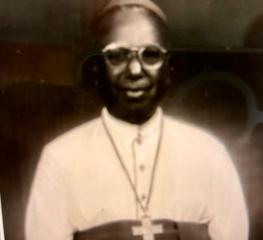by Sivananthiram Alagandram, Geneva, May 16, 2024
.
Introduction
The Jaffna Tamil community offers a compelling narrative of migration, showcasing a remarkable trajectory from agricultural origins in Jaffna to attaining middle-class status within just half a century in Malaysia. Yet, equally intriguing is their rapid ascent from clerical and junior civil service positions to prominent roles in the professional sphere. Today, their indispensable contributions to Malaysia’s early development remain somewhat overlooked and warrant recognition, particularly their pivotal involvement in constructing vital infrastructure, enhancing civil administration, overseeing plantation industries, and fostering advancements in education, religion, and culture within their adopted homeland.
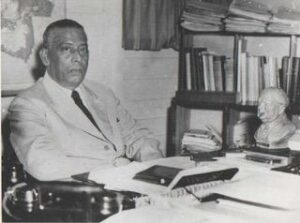
Sir E. E. C. Thuraisingham. Malaysia’s first Education Minister . Photograph: The Star 2-9-2013
In the words of Sir George Maxwell, the former Chief Secretary to British Malaya “Malaya owes a great debt of gratitude to the Jaffna Tamils who have rendered invaluable service towards the development of Malaya. He adds further that the Jaffna Tamils courageously worked “far away in the jungle, in connection with some road or railway-construction work which the men born and bred in the country would refuse to accept. Throughout the Malay States, there are lonely graves of these men”.
In addition, it was their remittances from Malaya that enhanced the quality of life for those they left behind in Jaffna. These remittances increased the GDP of Jaffna and assisted in the modernization process of this Northern Province. The impact of this migration process influenced Malaysia’s development trajectory too , reverberating across various economic sectors and producing brilliant minds that assisted the British Administration in establishing the foundations of modern civil administration in Malaysia. From railways and postal services to hospital management, telecommunications, public works, education, and sports, their contributions were instrumental in shaping Malaysia’s governance and infrastructure.
From the late 19th century to the outbreak of WW2, they effectively governed civil administration, setting the stage for subsequent waves of Jaffna Tamil migration from Jaffna to countries like Nigeria and Brunei in the mid-20th century. Remarkably, despite being among the smallest minority communities, they advocated for meritocracy and fair competition, without seeking special privileges. For this community with the lowest crime rate ,their achievements and contributions to Malaysia’s growth and development far exceed their numerical representation, underscoring their enduring legacy and profound impact on the nation’s progress.
.
The Game Changer: The British Education Policy .
The pivotal shift came with the British Educational Policy in Ceylon, which prioritized English Education, becoming a game-changer. This policy opened doors for all classes of Ceylon Tamils to access English education. By the mid-19th century, agriculture, once the backbone of the economy, provided scant opportunities for income and employment due to the depletion of the red Jaffna soil from years of cultivation.
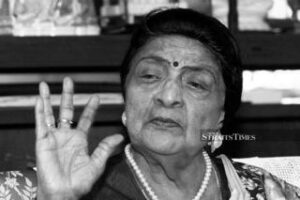
Tan Sri Devaki Krishnan first woman elected to public office in Malaysia. Photograph: New Straits Times January 21, 2024
Simultaneously, the civil administration in Ceylon in the mid 19th century experienced rapid expansion. English education became imperative for securing employment in the civil service, leading to the emergence of a large number of Jaffna Tamil white-collar workers. They filled the ranks of the civil service across the island, gaining disproportionately more opportunities compared to the Sinhalese community through their hard work, loyalty and honesty.
The British selected their candidates for the civil service based on a merit basis through an open civil service exam without an ethnic quota. Soon the Jaffna Tamils dominated the civil administration in Ceylon . Their dominant position can be seen even in the late 1960’s as a Jaffna Tamil Rajan Kadiragamar was promoted as the Chief Commander of the Royal Ceylon Navy, and Anton Muthukumaru also became the first Sri Lankan Commander of the then Ceylon Army from 1955-1959.
.
Early Waves of Jaffna Tamil Migration to Malaya.
The initial phase, spanning from 1870 to 1900, marked a significant influx of Jaffna Tamils to Malaya. During this period, migrants primarily included officials seconded from the Ceylon Civil Service and some sponsored migrants. The British authorities played a pivotal role by bringing in senior civil servants to oversee various sectors such as Public Works, Medical Services, Postals, and Railways.
A notable initiative during this phase was the establishment of the Ceylon Pioneer Corps (CPC) in 1883, comprising approximately 200 surveyors, overseers, clerks, dressers, and artisans. The CPC was deployed for service in Perak and other Malay states, contributing significantly to the development and administration of the region.
The second phase of migration, spanning from the 1900s to 1930, coincided with a period of rapid colonial expansion driven by the flourishing exports of rubber and tin. This era, known as the “Sondakaran Wave,” presented ample employment opportunities for Jaffna Tamils, leading to a chain migration phenomenon as they sought to secure employment for their families and acquaintances in Malaya.
For instance, my grandfather, Ayathurai Sinnathambar from Klang, not only brought his immediate family but also extended his support to his nieces and nephews, facilitating their migration to Malaya. Moreover, the growth of industries and infrastructure, spurred by the colonial economy, further encouraged the migration and settlement of Jaffna Tamils in colonial Malaya.
By 1931, the census of Malaysia recorded 18,407 Sri Lankan migrants. Over the following decade, following World War II, their numbers surged to approximately 25,000, with a significant majority—around 22,000—comprising Jaffna Tamils.
.
Monopoly of the Civil Service
By the 1930s, Jaffna Tamils had become an integral part of the British civil administration, having virtually monopolized clerical and technical services in British Malaya for nearly five decades from 1885 until 1930. In 1919, they constituted 46 percent of the subordinated officers in the Federated Malay States, consisting of Perak, Selangor, Negeri Sembilan, and Pahang, forming the FMS Clerical Service. Their representation increased from 50% of subordinate officers in 1921 to 65.3% in 1930. During this period, almost 80% of Jaffna Tamils lived in the Federated Malay States.
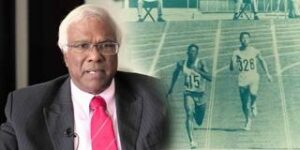
“The Flying Doctor,” Jegathesan was the fastest man in Asia during the 1960s. Photograph: Kuldip Singh, Facebook August 4th 2021.
Beyond their proficiency in the English language, they were recognized for their unwavering diligence, loyalty, and integrity, traits that set them apart. Notably, they possessed exceptional aptitude in mathematics and accounts, which were critical skills in audit and customs departments contributing to their reputation for precision and reliability. However, what truly distinguished them was their adeptness in English communication, granting them a distinct advantage in securing positions within administrative, technical and supervisory capacities across both public and private sectors.
Their impact transcended mere clerical duties; they held pivotal roles as technical assistants, railway station masters, hospital aides, dressers, and assistant land surveyors. The period preceding World War II marked a significant era of Malaya’s national development, largely propelled by the tireless efforts, unwavering dedication, and specialized skills of these officials. Their pioneering contributions laid the groundwork for the modernization and progress of our nation-state.
If there was one department which can showcase the legacy of Jaffna Tamils in development of this country , it was the railways .Building on the experience they brought from working in the railways in Ceylon, they virtually ran the railway administration .It was not uncommon to see officials from guards and ticket collectors to station-masters and technical subordinates coming from the Jaffna community . Before 1940, almost all the station masters were Jaffna Tamils who very efficiently administered the railway service in pre-war Malaya with minimal accidents.
.
Supervisory role in Malaya’s Plantation Success.
The plantation sector emerged as a lucrative industry for the British, quickly becoming the second-largest employer of Jaffna Tamils, following the civil service. Within this sector, English-educated supervisory and clerical staff from the Jaffna Tamil community played a pivotal role alongside plantation workers from South India, driving the expansion of rubber and early palm oil plantations in Malaya. In the 1930’s they were joined by supervisory staff from Kerala. In the post-World War II era, when Britain faced economic challenges, the earnings from rubber plantations and tin became crucial sources of revenue, aiding the nation’s financial recovery. The supervisory skills of Jaffna Tamils, combined with the labor from predominantly South Indian workers, contributed to substantial profits, which were often repatriated to the metropolitan capital for the benefit of British capitalists.
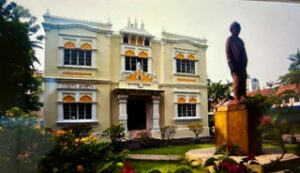
The Vivkanada Ashram in Kuala Lumpur Chinna Yalpanam. The Vivekandana Ashram stands today as an important legacy of Jaffna Tamils in the spread of Vedantic Teachings. Photograph: https://www.visitselangor.com/vivekananda
A Journey of Aspiration and Adaptation
The first generation of migrants leaving Jaffna for colonial Malaysia in the mid nineteenth century initially were akin to birds of passage. They migrated to save from relatively high paying government jobs in British Malaya so as to retire with better quality of life in Jaffna They desired to follow their hearts to their home to the loved ones they left behind. They were sojourners who ultimately desired to return to Jaffna on retirement. To the Jaffna Tamil of pre-war Malaya ,his attachment to his birthplace is indeed a known fact and he always would want to to spend his last days in his village and among his relatives and friends.
Initially it was the males who migrated. Given the favorable salary and housing opportunities , their wives and children soon followed. However as more and more children were born in Malaya, they decided to make Malaya their home so that their children could avail themselves to good education and employment . With each passing generation, the ties to Jaffna weakened, as the allure of better education and employment opportunities for their children anchored them more firmly in their adopted homeland. By time WW2 broke out, the Jaffna Tamils established themselves as a permanent and stable middle-class population in Malaysia.
.
Empowering Through Education: The Jaffna Tamil Quest for Success.
Inspired by the transformative power of English education in their own lives, Jaffanese parents in Malaya embarked on a profound journey to secure quality education for their children, considering it their solemn duty to cultivate future professionals. They spared no effort in enrolling them in prestigious English Schools such as the Victoria Institution and Methodist Boys School in Kuala Lumpur, High School Klang, King George V in Seremban, Tungku Muhmud School in Kuala Pilah, Anderson School in Ipoh, Penang Free School in Penang, English College Johore Baharu, Clifford School in Kuala Lipis, and Muhammud School in Raub etc.
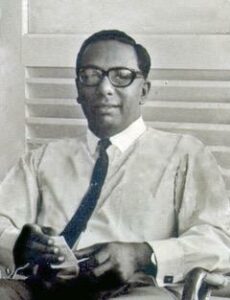
DR Seenivasagam and his Brother SP Seenivasagam were leaders of the People’s Progressive Party (PPP), which in the 1950s and 60s was very influential in Perak with a very strong Chinese base.
Before the disruptions of World War II, a remarkable trend emerged as Jaffna Tamils disproportionately excelled in esteemed institutions like King Edward VII Medical School and later the University of Malaya in Singapore surpassing their numerical representation.
Driven by a deep belief in education’s ability to uplift and empower, many parents went to great lengths, sending their children to the United Kingdom to study law or to India to pursue medical studies. Following Malaya’s independence in 1957, this commitment to education became a cornerstone of the Sri Lankan community, with professional pursuits like law, medicine, and engineering emerging as focal points.
Today, the prominence of graduates in liberal studies, including lawyers, doctors, engineers, and scholars among the Jaffna community, stands as a testament to the unwavering dedication of Jaffanese parents toward nurturing a generation poised for professional excellence. Their enduring efforts have not only enriched individual lives but have also shaped the trajectory of the broader community, leaving an indelible mark on the landscape of education and achievement in Malaya.
.
Preserving Sacred Traditions: The Establishment of Jaffna Tamil Temples Across Malaya
One of the hallmarks of the legacy were the cultural institutions they created in which the Jaffna community were able to satisfy their community’s economic and cultural needs without depending on other communities. They recognized the necessity setting up organizations where Jaffna Tamils residing far from their homeland could convene, socialize, exchange information, and offer mutual support. .Among the earliest of these was the Vivekananda Ashram in Kuala Lumpur, and the Ceylon Associations in Taiping, Seremban, Johore Bahru, Kluang, and Kuantan, etc. After Malay attained independence in 1957, the country was going a period of transition and many changes were taking place. The formation of the Malayan Ceylonese Congress in l958 is the climax to the public life of Ceylonese in Malaya. M.C.C was therefore created to promote and safeguard the Political,Educational, Social and Cultural interests of the Malaysian Ceylonese Community.
.
As a deeply religious and devout community, their commitment to prayer in their own temples was unwavering. They meticulously adhered to the agamic principles, ensuring that prayers and rituals mirrored those of their ancestral homeland in Jaffna. To uphold their religious heritage, they summoned Brahmin Kurukals from Jaffna to officiate these sacred ceremonies. Establishing temples in every major town they settled, such as the Kandasamy Temple in Scott Road, Pudu, Pillayar Temple , the Aathi Easwaran Temple in Sentul, and the Paranjothy Vinayagar Temple in Kuala Lumpur, they forged spiritual sanctuaries to nurture their faith. From the Pillayar Temple near Ipoh Railway Station to the Parasathy Amman Temple in Kluang, and from the Siti Vinayagar Temple in Taiping to the Subramaniam Temples scattered across Klang, Seremban, Kuantan, Bentong, Kuala Lipis, Raub, Temerloh, and Pekan, their devotion manifested in a number of sacred sites across Malaya .
.
The Jaffna Cooperative Society and Its Enduring Impact on Malaysian Communities
One of the most enduring legacies of the Jaffna Tamils in Malaysia is undoubtedly the establishment of the Jaffna Cooperative Society (JCS) in 1924. This institution serves as a beacon of achievement and community empowerment, offering valuable lessons and inspiration for other associations in Malaysia. From its inception, JCS has been a proactive organization, launching initiatives like the “Common Good Fund” in the 1930s to provide assistance to members during the Great Depression. Building on this success, it soon established the Community Service Fund, aimed at promoting cooperation, self-help, and socioeconomic advancement within the Jaffanese Community.
.
During challenging times, such as the Great Depression, the JCS also played a crucial role by initiating the “Pathfinder,” the official organ of the society, to share information, instil ideals of cooperation, self-help, community service, and simple living among its members. Over the years, the society has introduced numerous funds and initiatives, such as the Thamby Thurai Educational Loan, Saravanamuthu-Saundrapillay Memorial Fund, and various educational scholarships and trusts, to assist community members in various endeavours, including education, housing, and professional development.In addition to this, the JCS through its activities was able to nurture a sense of belonging and mutual support among its members, strengthening community ties and facilitating cultural preservation. The sustainability of this organisation is also due to its democratic governance and transparency and ability to empower members to actively participate in its activities and its vision.
.
The support provided by JCS has enabled many Jaffna Tamil children to pursue higher education and professional careers, contributing to various fields like medicine, engineering, law, and business. This reflects the society’s commitment to investing in the future generation and fostering talent development within the community.
.
In 1953, JCS established the Jaffanese Cooperative Housing Society to provide housing-related services and support to its members. The Housing Society’s flagship projects, Taman Kanagapuram and Taman Yarl, were instrumental in creating a prosperous, property-owning community. These ventures enabled the Jaffna Tamils to acquire properties and ascend into the middle class, a legacy that has transcended generations.
.
As JCS celebrates its centenary in August 2024, its enduring success can be attributed to its adaptability and innovation. It has evolved over the years to meet the changing needs of its members, embracing modernization while upholding its core values and objectives. Overall, the Jaffna Cooperative Society stands as a model of cooperative principles in promoting socioeconomic development and empowerment within the Jaffna communities, leaving a profound impact on the Jaffna Tamils in Malaysia and beyond.
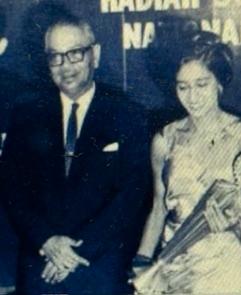
M Rajamani was the first Malaysian women to win a gold medal at any sports in the Asian Games. In 1966 she was awarded the inaugural sportswomen of the year by our first prime minister Tunku Abdul Rahman
Another of the earliest organisations to cater for the sole interest of Jaffna Tamils was the Selangor Ceylon Tamil Association which was intended to maintain the Jaffna community as a distinct group . This association was able to air the views and aspirations of Jaffna Tamils and represent Jaffna Tamils in national events . In the Sports Arena, the Ceylon Tamils formed the Tamilian Physical Culture Association (TPCA) in 1914 and helped to encourage many individuals who represented the country.
.
Remarkable Contributions of Jaffna Tamils to Malaysia: A Legacy of Excellence
The Jaffna Tamil community in Malaysia, though small, has produced outstanding individuals who have made significant contributions to the country’s development across various fields. Their legacy of excellence is evident through their numerous achievements.
Notable Personalities and Contributions:
Dr. S.S. Thiruchelvam: Recognized as the world’s first Asian surgeon. His daughter Sharmini was known as the Mona Lisa of the East .
Sir E.E. Clough Thuraisingam: He was the first Malaysian to serve as the Minister of Education, setting a precedent in the nation’s educational leadership.
MW Navaratnam was the first president of the Malayan Ceylonese Congress.
Mr. Bastianpillai Paul Nicholas: In 1936, he became the first Tamilian to receive a banking license in Malaya, pioneering Tamil involvement in the financial sector.
Dr. Viswalingam: A prominent eye specialist and grandfather of Singapore’s present President Tharman Shanmugaratnam. Dr. Viswalingam founded the Saiva Siddhanta Sangam and was instrumental in establishing the Aathi Easwaran Temple in Sentul. His daughter, Mahalakshmi Navaratnam, served as Chief Commissioner of the Girl Guides movement.
V Selvanayagam. Founder Member of CUPEACS and Organizing Secretary of the First International Tamil Congress , Kuala Lumpur.
REV.Samuel Abraham was the first pastor of the Tamil Methodist Church in Kuala Lumpur.
DS Ramanathan was the first mayor of Penang .
Chelvasingam Macintyre was the first non Malay Asian Judge and first High Commissioner to India Nepal and Ceylon.
V. Seenivasagam: A founding member of the Jaffna Cooperative Society (JCS) and Secretary of the Malaysian Arulneri Thirukootam. Seenivasagam played a vital role in the community’s cooperative and religious activities.
M. Kandiah: His support for the Sangeetha Abivirthi Sabbas greatly contributed to the growth of Indian classical music in Malaysia.
S.P. Seenivasagam and DR. Seenivasagam: These brothers founded the People’s Progressive Party in Ipoh, marking a significant political contribution to Malaysia.
Devaki Krishnan: She made history as the first woman elected to public office in Malaysia.
M. Rajamani: The first Malaysian female athlete to win gold in the 400 meters at the Asian Games, marking a milestone in Malaysian sports.
Mani Jegathesan: Known as “The Flying Doctor,” Jegathesan was the fastest man in Asia during the 1960s.
MC Kailaspathy and Sri Shanmuganathan: They served as captains of the national cricket and hockey teams, respectively, leaving a lasting legacy in Malaysian sports.
G. Vijayanathan: Gained international recognition as a world-class hockey umpire.
M. Rajasingam: As Director-General of Pos Malaysia from 1976 to 1986, he was instrumental in developing Malaysia’s postal code system.
S. Kandiah: The first Asian to serve as Malaysia’s Auditor-General, showcasing the community’s contributions to national governance.
S. Kulasingam: Known as the “Super Cop,” he retired as Assistant Commissioner of Police and was celebrated as one of the most fearless police officers in Malaysia during the 1970s.
.
The achievements of these individuals highlight the significant impact that the Jaffna Tamil community has had on Malaysia’s development and progress, spanning fields such as medicine, education, finance, politics, sports, and public service.
.
Conclusion
The saga of Jaffna Tamil migration to Malaysia is one of transformation, resilience, and profound contribution. From their humble agricultural origins in Jaffna to their rapid ascent to middle-class status in Malaysia, the journey of the Jaffna Tamil community is a testament to their unwavering determination and adaptability. Their story is one of overcoming challenges, seizing opportunities, and leaving an indelible mark on the fabric of Malaysian society.
.
References
Hodelin, Kristina. “Navigating Empire: Migration and Social Mobility of Jaffna Tamils in Malaysia, 1800-1948.” Radboud University Nijmegen, 2021.
Malhi, Ranjit Singh. “The Ceylon Tamils Connection.” Malaysiakini, January 15, 2022.
Ponniah, Edward I., and A.T. Kulasingham. Spotlights on the Jaffna Tamils in Malaya. Kuala Lumpur: The Commercial Press, 1935.
Ramasamy, Rajakrishnan. Sojourners to Citizens: Sri Lankan Tamils in Malaysia, 1885-1965. Kuala Lumpur: Sri Veera Trading, 1988.


